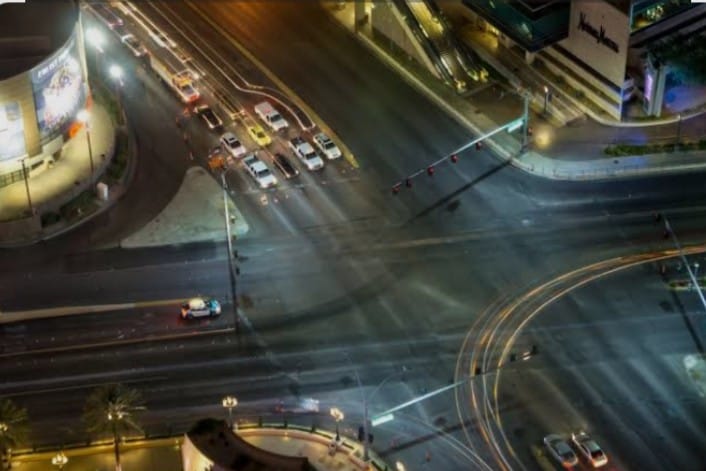Intersections are where every type of roadway user—drivers, cyclists, motorcyclists, and pedestrians—must converge and navigate a complex mix of signals, turning patterns, and timing. In cities across the country, intersections are consistently among the most dangerous places on the road, and in Las Vegas, they are especially treacherous. From high-speed boulevards to outdated traffic controls, the city’s major junctions are magnets for collisions, near-misses, and confusion.
Las Vegas drivers face a unique combination of challenges at intersections: a constant influx of tourists unfamiliar with the roads, sprawling multi-lane streets, and a fast-paced culture that rewards aggressive driving. All of these factors combine to make local intersections riskier than most. For those injured in these hotspots, working with the Las Vegas Law Firm Koch & Brim can help uncover the cause of the crash, establish liability, and pursue the compensation necessary for recovery.
Complex Layouts That Overwhelm Drivers
Many Las Vegas intersections are enormous, spanning up to eight or more lanes in each direction with additional turn lanes and dual signals. While these expansive layouts are designed to manage heavy traffic flow, they can confuse even experienced drivers, especially when multiple signal phases or lane restrictions are involved.
Tourists and newcomers often struggle to navigate these intersections correctly, resulting in last-minute lane changes, missed turns, or illegal maneuvers. Even locals, lulled into autopilot during their commutes, may fail to notice altered timing patterns or temporary construction changes. These layout challenges directly contribute to the city’s high number of intersection crashes.
Speed Meets Signal Confusion
Speeding is a chronic issue on major Las Vegas roads like Sahara Avenue, Flamingo Road, and Tropicana Avenue. When speeding drivers approach intersections, they often try to “beat the light,” which leads to red-light running and dangerous side-impact collisions, also known as T-bone accidents.
Add in the complexity of yellow-light timing, blinking arrows, or unprotected left turns, and even a moment’s hesitation or overconfidence can lead to a serious crash. Drivers unfamiliar with these timing nuances might accelerate too early or hesitate too long, increasing the risk for rear-end and broadside collisions at critical moments.
Inadequate Pedestrian Protection
Despite Las Vegas’s efforts to become more pedestrian-friendly, many intersections remain poorly designed for foot traffic. Long crosswalk distances, short crossing times, and minimal refuge islands leave pedestrians exposed for extended periods. When drivers aren’t expecting someone on foot or are too impatient to wait, intersections become dangerous zones.
At night, the risks are even greater. Poor lighting, wide turning radii, and limited pedestrian visibility make it difficult for drivers to spot people in the crosswalk. Tourists are especially vulnerable as they navigate unfamiliar streets, often assuming a “walk” sign guarantees safety. In reality, the legal right-of-way is no match for a distracted or speeding driver.
High Rates of Distracted and Impaired Driving
Las Vegas has a persistent problem with distracted and impaired driving, both of which significantly heighten the dangers at intersections. Whether it’s a driver glancing at a GPS, sending a text, or under the influence of alcohol or drugs, reaction times and judgment plummet when they approach a junction.
Intersections require split-second decisions and full attention. A distracted or impaired driver may miss a red light, blow through a stop sign, or fail to notice that pedestrians have entered the crosswalk. This combination of delayed reaction and poor decision-making leads to some of the most catastrophic collisions in the valley.
Tourists Behind the Wheel
Las Vegas welcomes more than 40 million visitors annually, many of whom rent cars or drive in from neighboring states. These drivers are often unfamiliar with local street layouts, intersection patterns, and signal quirks. Confusion leads to hesitation, erratic lane changes, or unintended traffic violations.
Out-of-town drivers may also be distracted by the city itself—mesmerized by the sights and sounds that make Vegas famous. When these distractions mix with unfamiliar intersections and fast-moving traffic, the result is a heightened risk of collision, not only for the tourists but also for those who share the road with them.
Limited Enforcement of Dangerous Behavior
Although Las Vegas Metropolitan Police and local agencies conduct traffic enforcement, the sheer volume of road users makes it difficult to monitor every major intersection. Red-light cameras are limited, and even where they exist, they don’t always deter risky behavior. Drivers learn which intersections are “safe” to speed through without consequences.
This enforcement gap allows patterns of dangerous behavior, such as running yellow lights, failing to yield, or speeding through school zones, to persist unchecked. Without stronger deterrents, reckless drivers continue to take risks, especially at intersections where they feel they won’t be caught or penalized.
Poor Weather and Low Visibility Conditions
Though Las Vegas is known for clear skies and sunshine, occasional rainstorms or nighttime glare from neon signage can severely impair visibility. When the roads are wet, intersections become especially slippery due to oil buildup. Drivers accustomed to dry pavement may lose control during sudden stops or turns.
Nighttime glare is another issue. The brightness of marquees and billboards along roads like Las Vegas Boulevard can obscure traffic signals or blind drivers temporarily. At intersections, where quick visual recognition is essential, this distraction can delay decision-making and increase the risk of serious crashes.
Making Intersections Safer: What Can Be Done?
Improving safety at Las Vegas intersections requires more than just paint and signage. It demands a combination of infrastructure upgrades, driver education, and policy reform. Features like dedicated turn signals, pedestrian refuge islands, longer crosswalk timers, and red-light enforcement cameras can reduce risk significantly.
But systemic change also starts with driver accountability and awareness. Slowing down, eliminating distractions, and respecting traffic laws can turn intersections from chaos zones into predictable, navigable spaces. Until those changes take root, drivers and pedestrians alike must remain vigilant—and those injured due to negligence have every right to pursue justice.
